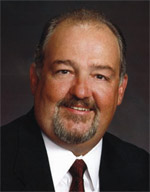Drake Precision Dental Laboratory
Charlotte, NC
Interviewee:
Billy W. Drake, CDT, Owner
|
QUESTION NO. 1
Inside Dentistry (ID): The dental industry and the oral healthcare arena have been changing rapidly within the past 5 to 10 years. What do you see as the most significant of those changes?
Billy W. Drake (BW): The expansion of digital technology has drastically impacted the dental profession in recent years. This encompasses CAD/CAM innovations as well as digital photographic communication. The effect of CEREC® technology for same-day restorations in office has impacted the number of crowns fabricated by commercial dental laboratories. The influence on laboratory-processed restorations by digital technologies started with the Procera® system, a hybrid of in-house CAD combined with offsite CAM milling, initially using alumina for crowns. This evolved into zirconia that dramatically increased strength, allowing the fabrication of multiple-unit bridges anywhere in the mouth. Today, in-house CAD/CAM systems such as CEREC, Cercon®, Everest, LavaTM, and our currently preferred system, Zeno-Tec® by Wieland, continue to drive the industry. In addition to the CAD/CAM boom, the use of digital photography for shade information and overall treatment planning has improved communication dramatically, generating superior case results.
In response to this digital boom, we have selected the Zeno-Tec® CAD/CAM system for in-house fabrication of all-ceramic crowns and bridges manufactured with zirconia. Zirconia provides strength, design milling tolerances within 10 µm for optimal fit, layered with high-fusing porcelains for fracture resistance and esthetics. We also receive a significant number of digital images from doctors and use our digital speck-finder technology to capture images of questionable models, dies, impressions, bites, etc. These images can then be e-mailed to enhance communication.
QUESTION NO. 2
ID: In what ways—both internally and in dealing with the broader oral healthcare marketplace—has your company responded to these changes?
BW: Drake Precision Dental Laboratory services the market by continuing to be a resource for the profession through the introduction of new technology, techniques, and products. Open lines of communication are crucial among all parties—dentists and clinical teams, laboratories and manufacturers—to provide a means for continued improvement of care for the patient. As laboratory professionals it is our responsibility to contribute at every opportunity to ensure the success of the case.
QUESTION NO. 3
ID: What do you see as your biggest responsibility to the marketplace, and why does your choice rank as your #1 priority?
BW: The indirect restorative process, most specifically the final impression and working cast, remain the weakest link in the prosthodontic process. The use of digital technology is finally available to improve the predictability required for successful restorations. The current dental marketplace offers the Cadent iTero and Brontes systems. The iTero system reports the most clinical activity with a 99.9% success rate restoring 18,000 units. The advantages of these technologies are digital consistency and accuracy. The current disadvantages are lost time (increased time requirement of 2 days) and additional cost to the doctor and laboratory. Based on the trends of previous technology we would expect this to improve.
QUESTION NO. 4
ID: What product categories—whether preventive, restorative, operative, auxillary, diagnostic, etc—do you feel are most in need of innovation based on what’s currently available?
BW: Product development is best accomplished through alpha/beta site dental laboratory testing in conjunction with academically based North American clinical trials. The beta site trials should be conducted in a routine clinical environment. Our experience as participants in this type of process with industry leaders Nobel BiocareTM, 3iTM, Dentsply, Atlantis, Ivoclar, Jelenko/Argen, and Heraeus Kulzer has proven to be very beneficial to the dental profession and ultimately the patient.
QUESTION NO. 5
ID: What do you see as the best approach to the research, development, testing, and ultimate delivery to the market of such needed advancements?
BW: Our primary focus at Drake Precision Dental Laboratory is being “The Laboratory Resource” through educational support. Our internal laboratory training program is centered on PTC verification 2000, a third-party certification system. This is complimented by clinical training for our staff by Dr. Larry Holt, DDS, as well as many other respected clinicians. Our management team provides continuing education programs to dentists, dental assistants, and technicians through local, regional, and national dental associations. Topics include all areas of dental technology.
As in any successful business, our people are the key to this resource. Our most valuable contribution to the restorative process is our ability to aid in diagnostics, treatment planning, and material selection for any type of restorative case. This communication is provided by our management team which consists exclusively of board-certified dental technicians with more than 250 years of combined experience.
QUESTION NO. 6
ID: There are many challenges facing dentistry and oral healthcare today. How is your company helping to resolve them?
BW: Out of the 18,000+ dental laboratories in the United States, Drake Precision Dental Laboratory is one of the elite few that have achieved Certified Dental Laboratory (CDL) Status, Federal Drug Administration (FDA) registration, and Dental Appliance Manufacturers Audit Scheme (DAMAS) Certification. This assures the patient that the material content and manufacturing processes meet the highest possible quality standards.




